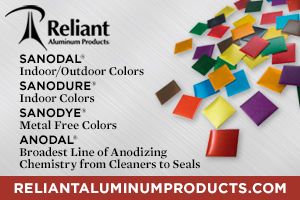Buried a bit in the announcement by Lee Zeldin, the Environmental Protection Agency Administrator, of the Trump Administration’s plans to limit the amount of PFAS producers of the toxic substances that can discharge into the water was a nugget that leaped off the page.
The EPA's announcement says the agency will “Develop effluent limitations guidelines (ELGs) for PFAS manufacturers and metal finishers and evaluate other ELGs necessary for reducing PFAS discharges.”
Yes, that's right: the EPA again singled out the metal finishing industry to target them for enforcement. This time, they will set limits on effluent limitations in the coming years.
This begs the big question: why did the EPA again single out the metal finishing industry and not others?
We have read again and again about how the Airport Operations/Fire Training Centers around the U.S. have used PFAS in their products for decades.
"The use of firefighting foam, mandated by the U.S. government, has long been an established practice at airports and aviation facilities nationwide," says a report by Singleton Schreiber, LLP.
The report also found that the minimum estimated remediation costs for airports typically run between $1 million and $50 million. That is a huge chunk of change if you are a municipally-owned airport, and tax dollars will be needed to remove the years of PFAS that have been allowed to seep into the ground.
"Someone from the EPA told me once that they target the finishing industry because they don't fight back."
Likewise, chemical manufacturers are also the biggest culprits in using PFAS, from plastic packaging to the beer we drink.
The textile and tannery industries are also major users of PFAS.
"Per-and poly-fluoroalkyl substances (PFAS) are a group of chemicals often used in the textile industry for specific characteristics such as breathability, oil/water/dirt repellency, thermal stability, and durability throughout the washing and dry cleaning processes," says a report by UL Solutions.
However, you didn't hear Zeldin specifically call out the firefighting, chemical, or textile industries by name. It was just the metal finishing industry that was mentioned in a widely circulated news story, which again gives everyone in it a black eye.
So the question begs: Why is the metal finishing industry, and no one else, being specifically targeted?
The answer may be something I heard several years ago from a prominent lawyer who has represented owners of finishing operations in numerous civil cases with the EPA and others over the years.
I asked him why it seemed the metal finishing industry was always in the EPA and regulators’ crosshairs. His answer was fairly blunt.
"Someone from the EPA told me once that they target the finishing industry because they don't fight back," they told me. "It's an easy win for the EPA a lot of times to show the administration and environmentalists that they are going after somebody."
And it all makes perfect sense. The metal finishing industry lacks strong representation when it comes to fighting back. When the Southern California finishers were having their livelihood threatened with new hex chrome rules, the industry did not fight back. They never do.
And that's a question those who own companies in the industry should be asking themselves every day: who has our back when regulators are looking for a scapegoat?
Sadly, until the finishers themselves take control of things, they may be a target every year because they don't fight back.




 Tim Pennington is Editor-in-Chief of Finishing and Coating, and has covered the industry since 2010. He has traveled extensively throughout North America visiting shops and production facilities, and meeting those who work in the industry. Tim began his career in the newspaper industry, then wound itself between the sports field with the PGA Tour and marketing and communications firms, and finally back into the publishing world in the finishing and coating sector. If you want to reach Tim, just go
Tim Pennington is Editor-in-Chief of Finishing and Coating, and has covered the industry since 2010. He has traveled extensively throughout North America visiting shops and production facilities, and meeting those who work in the industry. Tim began his career in the newspaper industry, then wound itself between the sports field with the PGA Tour and marketing and communications firms, and finally back into the publishing world in the finishing and coating sector. If you want to reach Tim, just go 





















